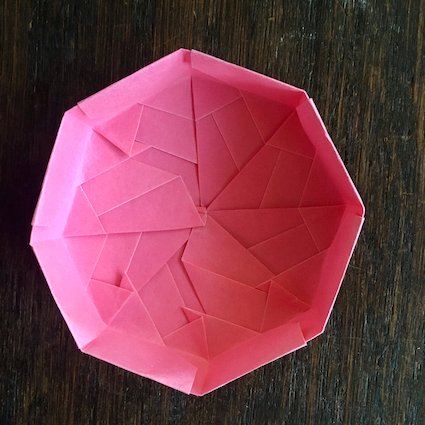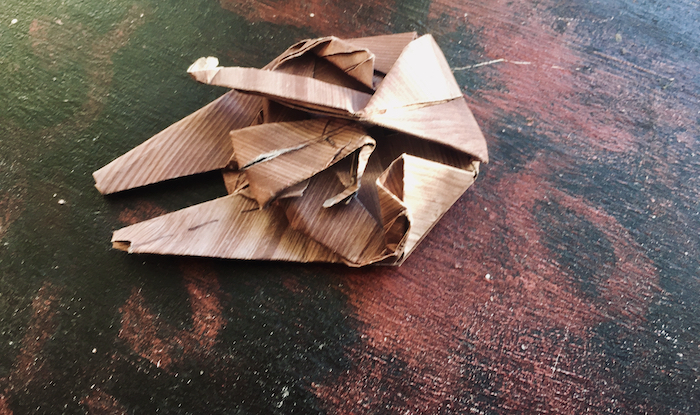Today I want to tell you about a folk called "OruKami".
Their culture, as can be read in the scriptures, was such that they knew how to flatter the senses like no others, give your eyes a beautiful sight, satisfy your craving for the pleasing and uplifting.
They have been exceedingly clever in seizing creatures from the woods, the rivers and the skies and turning them into figurines.
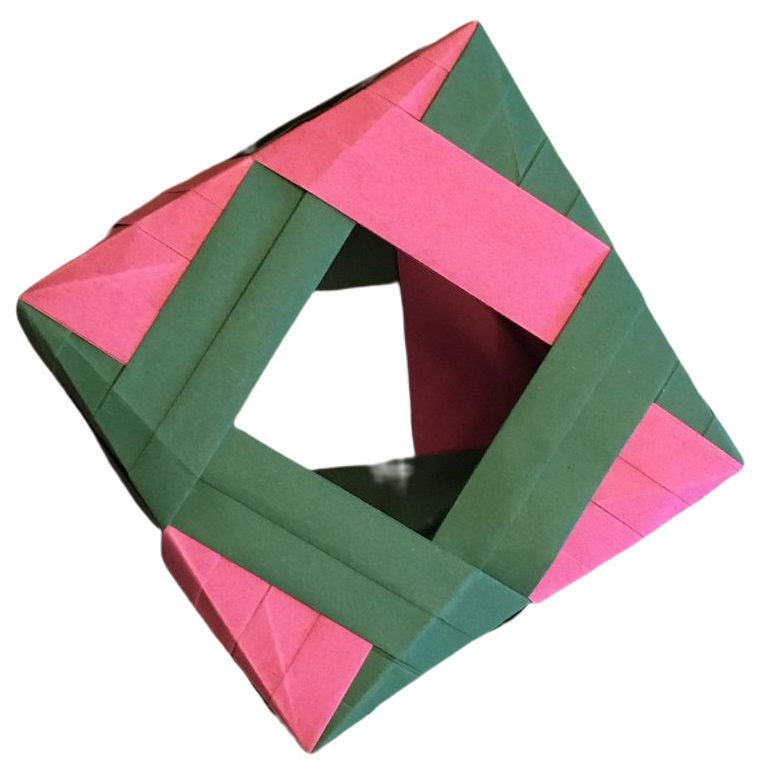
Let's see how my journey with the OruKami began.
I like to occupy my mind and my fingers equally with shapes, colours and materials that are aesthetic to me. I am a true OruKami when it comes to beauty, sensuality and pleasure. So I guess, I might be a very distant relative to these ancient peoples ;-)
I spend many hours forming a garment from fabric, imitating nature from paper, seeing a story in my mind, succumbing to nostalgic feelings, building a fantasy world. I love touching these things, taking in their smell, the texture of the surfaces, the sounds that are made when you cut something, fold it, put it together.
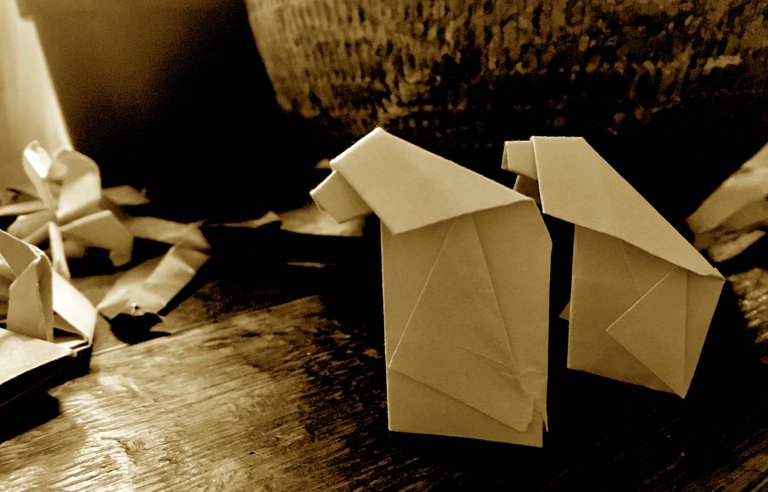
Ink and watercolor, when they hit the surface of the paper, how the fluids melt together and follow your plan, but also do their own thing, unpredicted. Here, I break sometimes with the OruKami tradition of perfectionism (sorry, ancestors).
When it crackles, crinkles, is smoothed or ironed hot, or sharpened, when it smells, glides through my fingers, such are my sensory pleasures.
Some say, that ...
Origami
is the modern term for the Japanese words "oru" (to fold) and "kami" (paper).
The origin of modular origami is a little hazy due to the lack of proper documentation. It is generally believed to have begun in the early 1970s with the Sonobe units made by Mitsunobu Sonobe. Six of those units could be assembled into a cube and three of those units could be assembled into a Toshie Takahama Jewel.
Source
When boredom drives you out the house
My interest for this art started in the childhood years of my son. We visited the local ethnological museum one boring Sunday, which was open a few afternoons out of turn to give parents and their children a bit of a break. When we arrived that day, we found a huge table where people were sitting and folding papers. Some of the tutors were very talented and I learned to fold an aeroplane there for the first time, which actually flew really well.

Left to right: An X-Wing from behind, an OruKami dog, a spaceship or flower, difficult to tell.
From that day on, I gradually became obsessed with folding papers. It all started with simple flying models and then progressed to animals, flowers, stars and small boxes. I found and still find it difficult to bring perfect shapes to completion, because origami requires you to work very neatly and tidily, it calls for an incredible amount of patience not to rush, but above all because a certain geometric spatial thinking is not inherent in me and I find the mathematical principles behind it difficult to access.
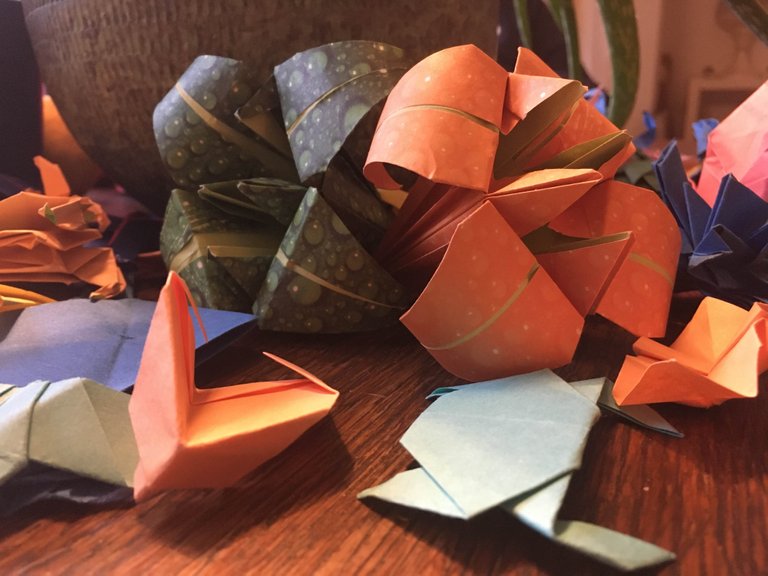
As with everything, however, practice makes the difference. After folding what felt like millions of little immature creatures and creepy-crawlies, one day I managed to make my own creation of a quite excellent beetle, of which I was really very proud.
Though it's lost in space and I don't know where to look for it, sadly. I did not make a pattern for it, as it was an act of spontaneity. It remains a one in a lifetime accomplishment.
Equally eagerly, my son produced spaceships that looked more and more adventurous, like a structure with an awful lot of niches and openings, wings and under-wings, a very complicated machine.
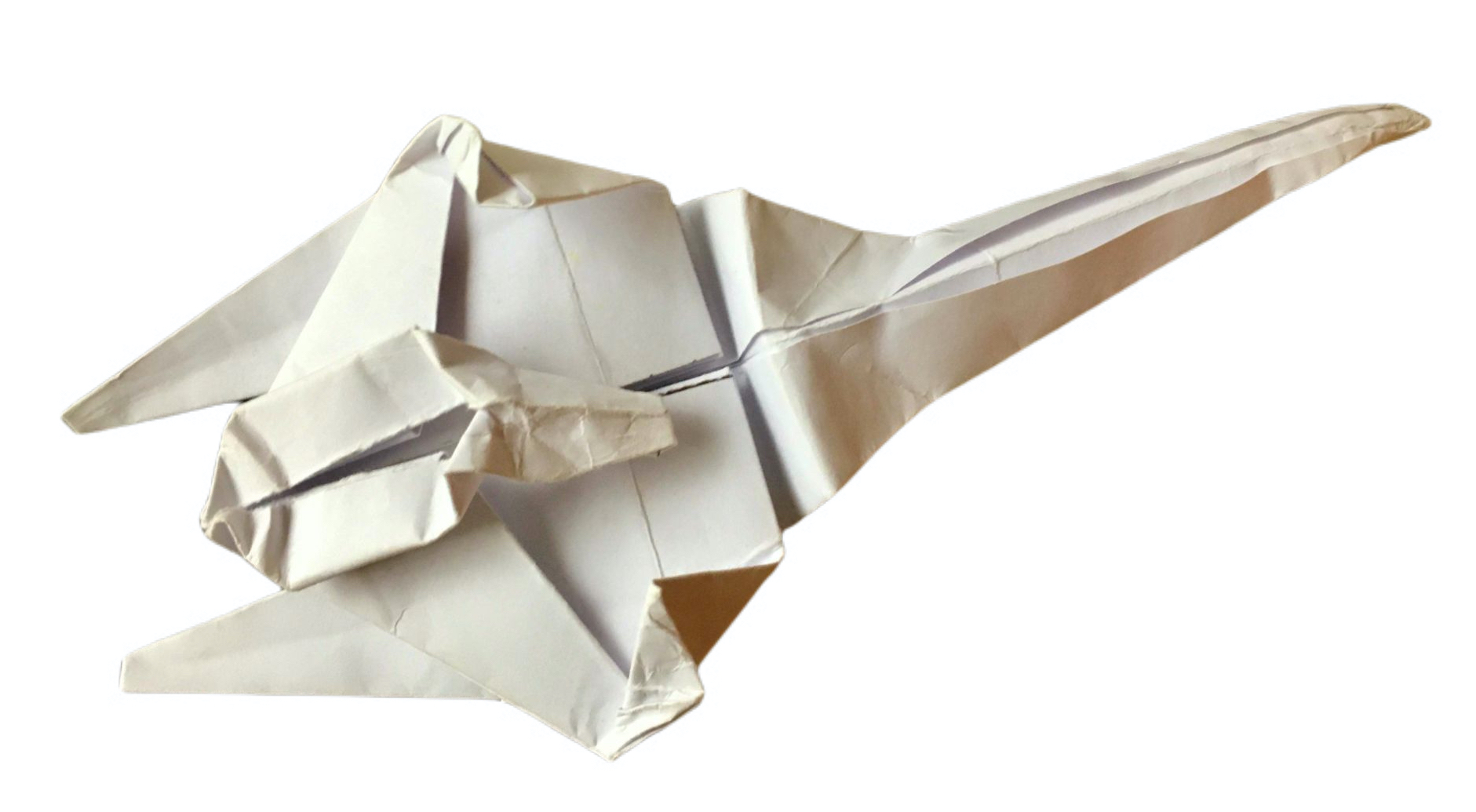
Kids are very permissive about how neatly they fold the paper. I was fascinated by how yet out of this freedom of action, the shapes captivated the eye.
I discovered my passion for little boomerangs, which, if you learned to throw them correctly, would actually come back to you.
It's downright terrifying to fold them so that they can fly too! The nitpicking in the making has frustrated me greatly time and time again! Afterwards I painted them in all sorts of colours and patterns, having something like Indian totems in mind. In the high phases I must have had ten or fifteen pieces flying around.
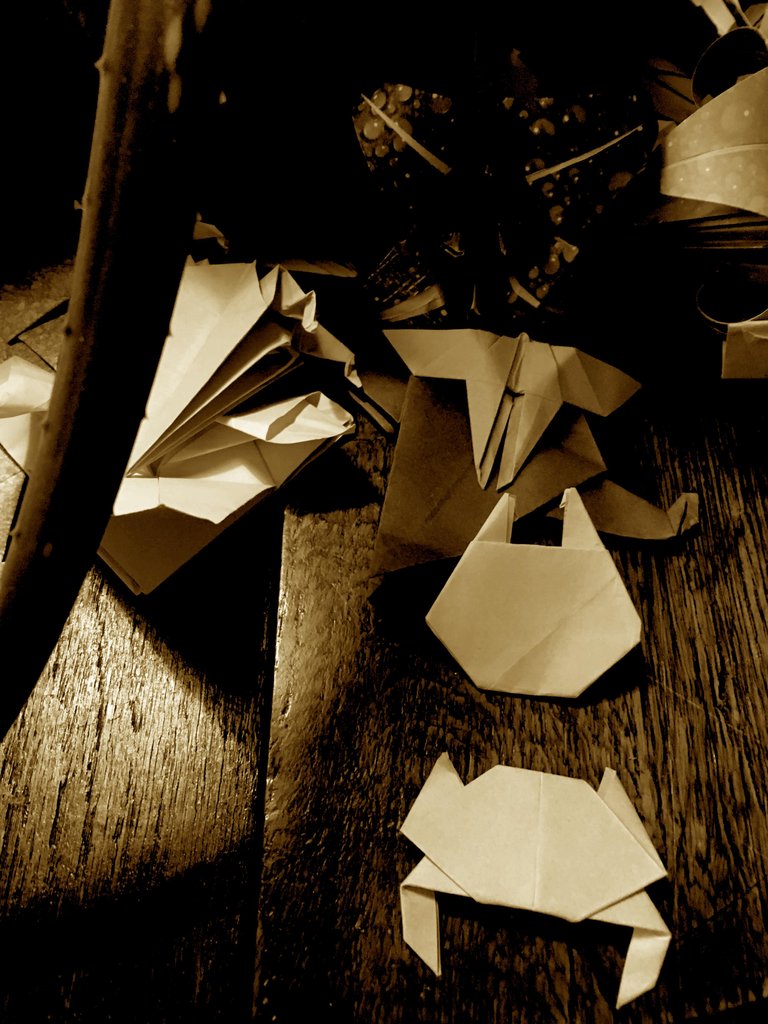
Crawlers parade, climbing up to where they believe the mountains are - crab, totally lost though ...
All the while, I was squinting with one eye at the origami constructions made from modules, which I hardly dared to start. Until one day I was ready and tackled them.
Granted, it is still easier to put modules together than to create a flower blossom of extraordinary beauty and depth from a single sheet of paper. That, I would think, is the supreme discipline.
Here you can see the result of one of the difficult modular ones:
Not to worry, a full picture of the same model follows below.






I half-broke my fingers, cursed, angrily tore misshaped modules apart, but finally I produced some well shaped forms. The first one I made, what was called "Firworks" in the explanatory video. A shape consisting of twelve individual modules, which at first looks like a concertina and where the dexterity is to interlock the last and first module from this row in such a way that the circular shape is created.
If the paper is touched too often, it gets damp from the sweat of your fingers and then it's not possible to interlock the parts.
What you see here, is called a "Decahedron" by the person, who uploaded this Folding Tutorial

The result of long winter hours, spent under the warm lights in the former dining room of my mom's house.

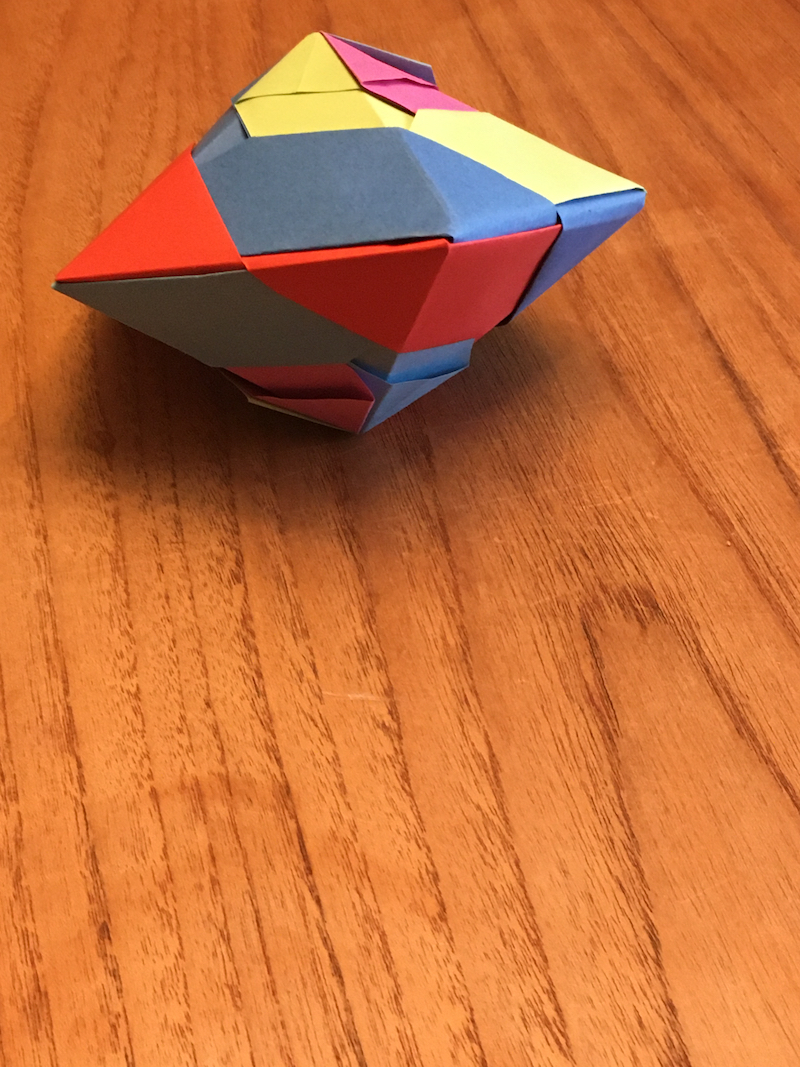
Reminiscent of a spinning top
I am not sure whether the designation is correct.
Mathematics / Geometry
Modular origami almost always means polyhedral or geometric modular origami, although there are some modulars that have nothing to do with geometry or polyhedra.
... we will assume that modular origami refers to polyhedral modular origami. A polyhedron is a three-dimensional solid that is bound by polygonal faces. A polygon in turn is a two-dimensional figure bound by straight lines. Aside from the real polyhedra themselves, modular origami involves the construction of a host of other objects that are based on polyhedra.
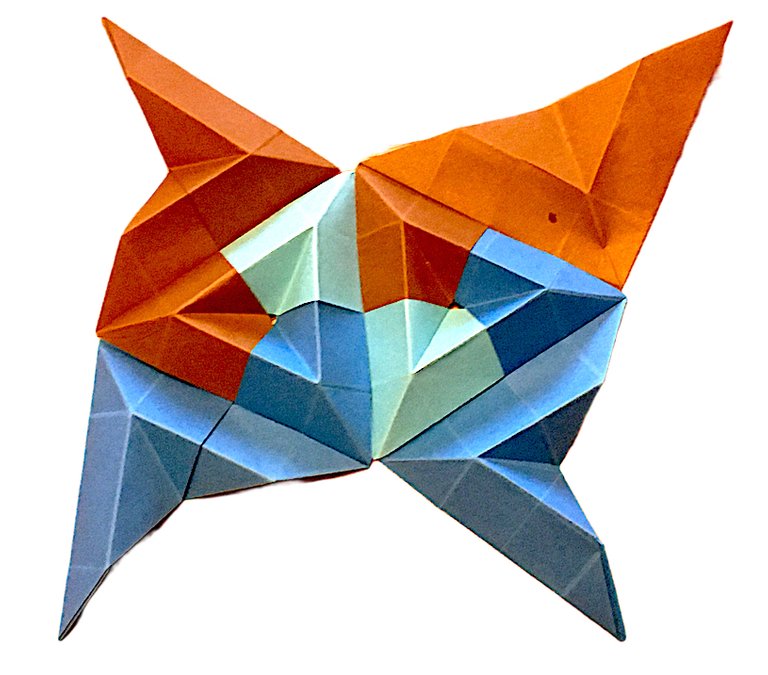
Above you can see several modules partially joined together, which in the final result give this shape:
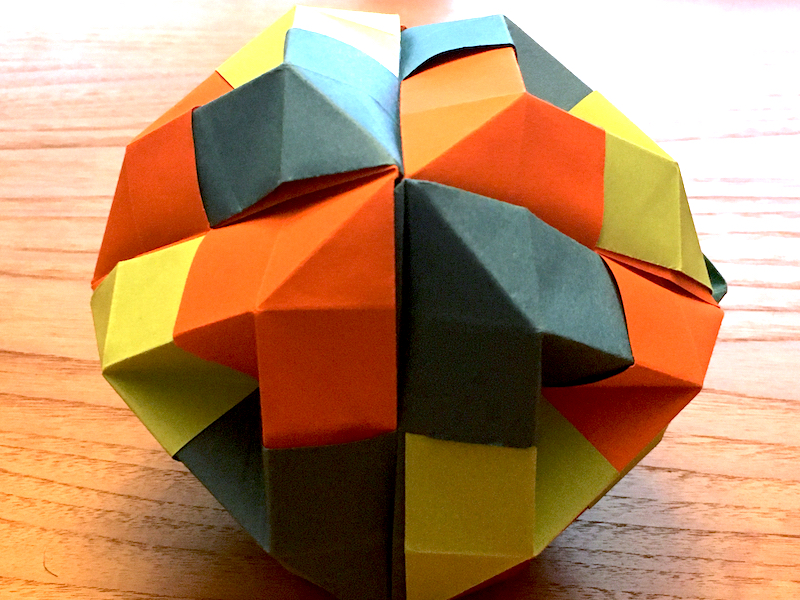

I haven't found the tutorial that I used to assemble this form!
Not knowing the correct geometric name, bothers me a bit, but looking at the platonic solids, I would say it's an Octahedron.
What do you mathematicians think?
... for every model there is an underlying polyhedron. It could be based on the Platonic or Archimedean solids ... , some of which have been with us since the BC period, or it could be based on prisms, antiprisms, Kepler-Poinsot solids, Johnson’s Solids, rhombohedra, or even irregular polyhedra. The most referenced polyhedra for origami constructions are undoubtedly the five Platonic solids.
From the artist's point of view, I would say that it is stucco work that gives the otherwise flat sides of this double pyramid their beautiful decoration. But of course this does not satisfy a mathematician's heart.
The fascinating thing about origami
is that you don't just stick something physical on top of something flat or cut into it, but that the given matter is folded into and out of itself, and somewhere I read something about this, that the universe can also be seen as a spatiotemporal folded-into-one-another universe, and that the many folds hold their mystery.
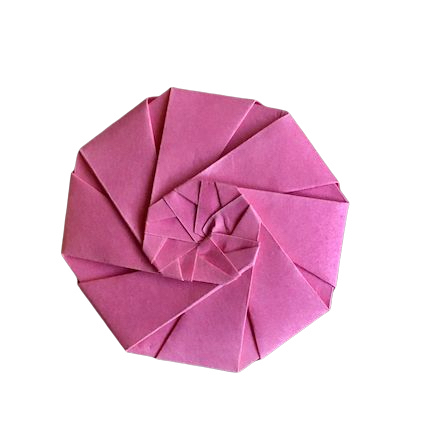
I hope you enjoyed this blogpost, which was mostly meant for your edification, a visual treat and a wee bit of amusement.
Pictures:
All the pictures are results of the photographs I took of the origami work I made myself. For the purposes of publication, I have cropped some and changed the colour.
Sources:
https://www.utm.edu/staff/Caldwell/origami/marvelous_modular_origami.pdf
https://en.wikipedia.org/wiki/Platonic_solid
https://origami-resource-center.com/history-of-origami/
http://www.nickrobinson.info/clients/didactics/viewtopic.php?f=11&t=54
https://mathworld.wolfram.com/JohnsonSolid.html
https://demonstrations.wolfram.com/Rhombohedra/
https://origami.kosmulski.org/types/geometric
